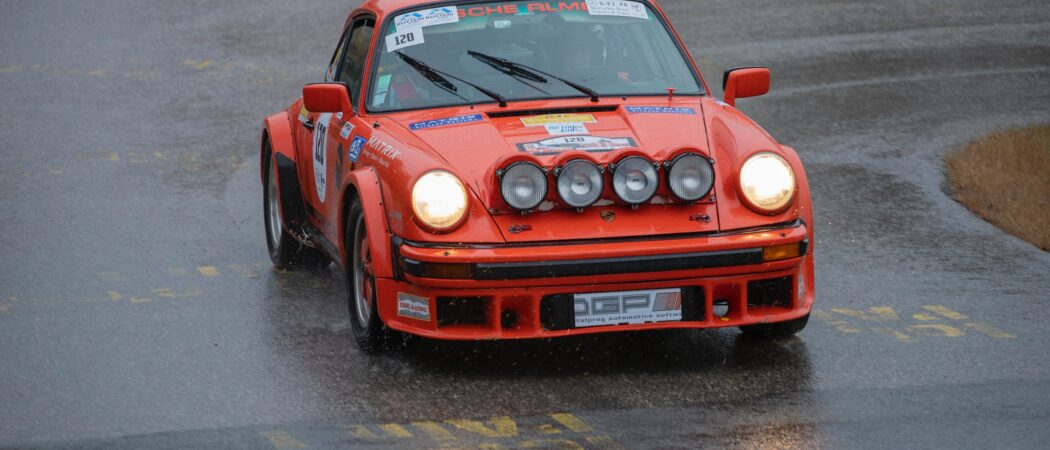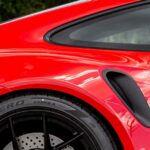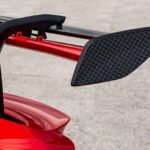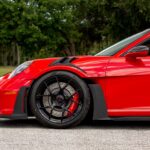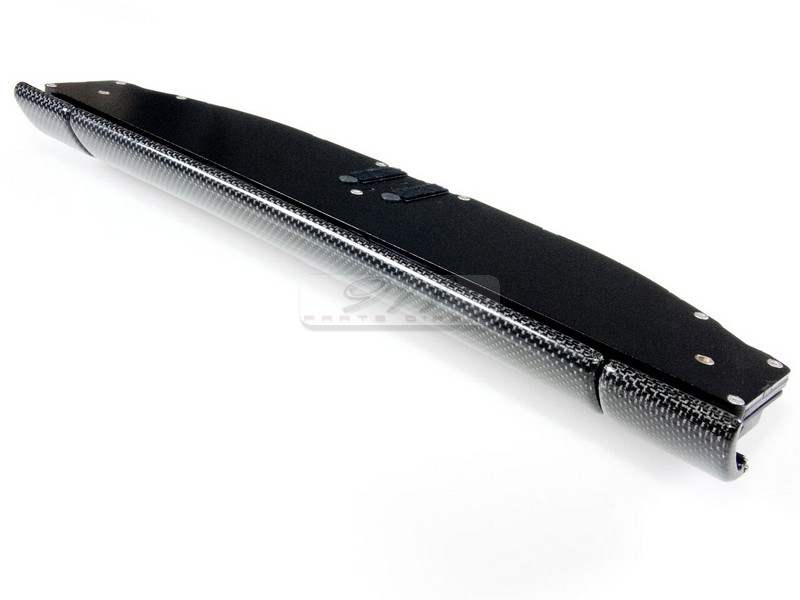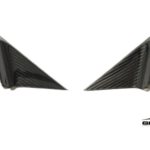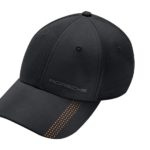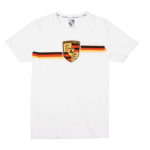The Porsche 911 has been a go-to platform for rally car racers for decades – going back almost to its inception in 1964. Only one year after, Porsche entered a 2.0 liter car into the Monte Carlo rally in 1965, and the rest is history, ultimately culminating in the legendary 959, a homologation special produced for Group B racing. These days, it still seems like the air-cooled cars, which finally met their demise with the introduction of the 996 in 1998, remain the most popular choice for Porsche enthusiasts. Unfortunately, the prices of air-cooled cars (encompassing the original 911, 930, and 964 generations) have skyrocketed, leaving these cars out of reach for most. Thankfully, there are quite a few key concepts which you can apply to any generation of 911 when building out your rally car.
Upgraded (or extra) lighting is usually one of the first upgrades made to any sort of enthusiast vehicle that’s intended to be used off-road. They’re particularly important on rally-style cars, for fairly obvious reasons. There are two areas to consider here; your headlights, and any other extra lights that you might be wanting to add.
Lighting
If you have an older model, you’re probably still working with the original halogen bulbs that came with the car. If a period-correct look is the most important to you, you may not want to mess with these. However, if you plan on driving the wheels off your car in some extreme conditions and need all the lumens you can get, you will want to look at LEDs, either in the form of replacement bulbs, or swapping in an entirely new projector housing, also referred to as “retrofits”. LED replacement bulbs are definitely the more affordable option and can put out a good amount of raw light. Unfortunately, the light pattern isn’t as efficient as a specially-designed housing, and you may have difficulties adjusting your headlight cutoff to legal levels. In addition, some jurisdictions may not allow them on-road and consider them an illegal modification.
If you can afford to bring your car into the 21st century, the retrofit projector housings are the highest-performing option. You can buy them as kits, or assemble them from components, if you’re handy. These housings are designed specifically for high-intensity LEDs, and will throw light much better than just swapping a new bulb in to your old housing. You can also find them with futuristic-looking LED running lights which really modernizes the look of the car. Overall, for a serious performance car that doesn’t need to look concours-correct, the retrofit projectors are going to be the highest-quality option.
Another very popular modification that you’ll find on these rally-spec cars are additional outboard lights. These are often mounted on top of the car to a roof rack, or to the front of the car using custom-fabricated mounts; there are an endless amount of variations in how these are mounted. Generally, these external lights are available in driving, spot, and flood patterns. Driving patterns are essentially analogous to everyday headlights, offering a good mix of coverage and distance to the light pattern. Also, most manufacturers offer driving lights that are, in fact, legal for street use as well. Spots are pretty self-explanatory – these throw a lot of light downrange, in a fairly concentrated manner. They can be great to see hazards in the distance as you’re bombing through the desert late at night, and are used quite regularly in desert racing and baja rigs for that reason. They’re designed to supplement your headlights or driving lights, and shouldn’t be run by themselves. Floods are great as “scene lighting” or “rock lights.” You can commonly find them mounted to the A-pillars at a slight angle, pointing outward to illuminate the sides of the road. You won’t get much throw from them, but they are great for illuminating off-road hazards and upcoming corners.
If you’re planning on doing any sort of rally racing with you 911 on your rubber-band street tires, you’re going to have a bad time. Tires serve as part of your suspension, and in addition to moving to smaller wheels, you will also want tougher, stronger tires to resist punctures from sharp rocks, sticks, and debris on the track.
Tires
16” or 15” wheels are the most common, and best choices, for this kind of activity. Depending on the year of your car and what suspension you’re running, you will likely find that 15” wheels will give you slightly better clearance, as well as offering more tire options to choose from. If you do go with a 16”, you should understand that 225r 60 tire is the absolute upper limit of most cars without adding a massive amount of work (that may not be worth it). It’s also advisable to buy two whole sets of tires and wheels – one for gravel use, and one for your usual driving activities. You’ll likely find that the gravel/off-road tires will be loud and lack performance on-road, and performance road tires are just generally a bad idea once the pavement ends. Think of it as an extra arrow in your quiver, just like snow tires are to some in the colder, snowier areas of the world. While selecting wheels, make sure to pay attention and select the correct bolt pattern that matches your individual 911 as well.

Whatever the size you choose to run for your excursions off-road, you should ensure your tires can take the abuse. Thankfully, tire compounds and technology have advanced to the point where it’s harder to make a bad decision here than a good one, as a general rule; the offerings of nearly all reputable tire companies should do the trick, from a durability standpoint, although BF Goodrich All-Terrains may be the most popular selection these days among Porsche 911 rally enthuiasts. There is one thing you should look for if you’re expecting snow or ice, and that’s the “Extreme Weather” rating that is denoted by a circular emblem on the tire containing a snowflake and some mountains. It’s also referred to as “Mountain Snowflake” or “Extreme Snow” rating. This denotes that the tread and rubber compound are suitable for all of the harshest, and coldest, climates. This rating is a modern innovation and might not be available in some of the more vintage-styled tires.
Above all else, just be mindful to match your wheel and tire combination to the conditions you expect to be driving. Taller sidewalls will provide more cushioning for uneven roads and also help to reduce parts breakage, but will need to be accompanied by the correct-sized tire. Make sure you double-check fitment (mainly focusing on width) before ordering
Just as critical as anything above, if not more, is the suspension underneath your car. We’ll only cover the high-level concepts here, since these kind of suspension upgrades could be an entire series of articles to themselves. The key concepts here are clearance and travel. “Clearance” has two meanings – both from the ground to the chassis, and from between the suspension components and the body. Clearance from the ground to the chassis is what most people think of when they hear the phrase, although ensuring your suspension clears the rest of the vehicle without interference is just as critical.
Basic Suspension Upgrades
In vehicles that feature body-on-frame construction (most commonly found in pickups and SUVs), it’s common to add a little body lift, which raises the body higher off the frame. This is usually used to clear larger tires or suspension with greater travel, and is a very simple mod to do by inserting little “biscuits” in between the frame rails and the body. Since the 911 is of unibody construction, it’s not so straightforward to accomplish this since the body and “frame” are integrated into one unit. What this means for you is that you should expect to replace nearly every suspension component; sway bars, struts, and torsion bars; in other words, the expensive stuff. Some further research will be required on your part depending how capable (and expensive) you want to make your project, but the good news is that most of these modifications are simple bolt-ons and able to be returned to stock in a long afternoon. Don’t forget that your beefier tires will also contribute to your frame-to-ground clearance.

Suspension travel is the other key component that you’ll be needing to integrate into your setup, and is also tied to the modifications you’ll be doing to achieve better clearance. The concept is pretty simple; in order to compensate for washboards, ruts, and rocks, you’ll need your entire suspension to be able to travel up and down more than they do from the factory. Because the shocks (technically coilovers in Porsches) are actualting more, and further, than they would on the road, you should also consider shock absorbers with remote reservoirs. It’s not uncommon for standard shocks to melt themselves when subjected to high-speed thrashing offroad, and you’ll likely not find any serious race vehicle without this setup. These are usually pretty spendy, but most reputable shocks of this caliber are able to be rebuild when necessary, saving you quite a few dollars when you’re due for a refresh. These shocks are also almost always adjustable, and feature improved valving for extreme use as well as fine-tuning adjustments so you can dial them in exactly the way you want. As stated above, sometimes you can get away without replacing your control arms or other components, but for extreme use, plan on a full refresh with new aftermarket parts.
Concluding Thoughts
Modifying your Porsche 911 for rally (or just general off-road) use is an incredibly expansive topic, and this article is barely scratching the surface. If this is the path you’d like to go down for your car, it’s a good idea to read through some enthusiast forums, such as Rennlist, with some of these topics in mind and see what works for other owners. A little research before you start your modifications can save you many, many hours of headache and wallet-ache. Thankfully, the long racing history of these 911s and the rabid enthusiasm of your average Porsche owner means there’s tons of information to sift through and apply to your car. So, go read some articles, flip through some historic photos from Dakar Rallies of years gone by, and then, when you’re ready, get to wrenching!

